
Tbilisi, the capital of Georgia, was one of the cities we lingered in during my three-week trip through the Caucasus. With its mix of history, architecture, and lively neighborhoods, there’s no shortage of ways to fill your days. But the one thing I knew I didn’t want to miss was a traditional sulfur bath. I try to look for experiences that feel distinctly local—things tied to place and culture—and in Tbilisi, the bathhouses are exactly that.
Sulfur baths have been part of life in Tbilisi for centuries. In fact, the name “Tbilisi” itself comes from the Georgian word for “warm,” referring to the city’s natural hot springs. The water is geothermal—naturally heated underground and rich in sulfur as it rises to the surface, fed by a river that runs beneath the bath district. People have been soaking in these waters for generations, believing the baths help with circulation, joint pain, skin health, and detoxification.
The baths are located in Abanotubani, the city’s historic bath district. You know you’re there when you see the rounded brick domes lining the street—the tops of the underground bathhouses. Places like Bathhouse No. 5 and Gulo’s have simple, domed exteriors and seem to attract more locals. Beyond just bathing, these sulfur baths have long been social hubs where locals meet, relax, and catch up.
Some of these bathhouses, like Gulo’s, have been operating for decades, though the tradition itself goes back centuries.
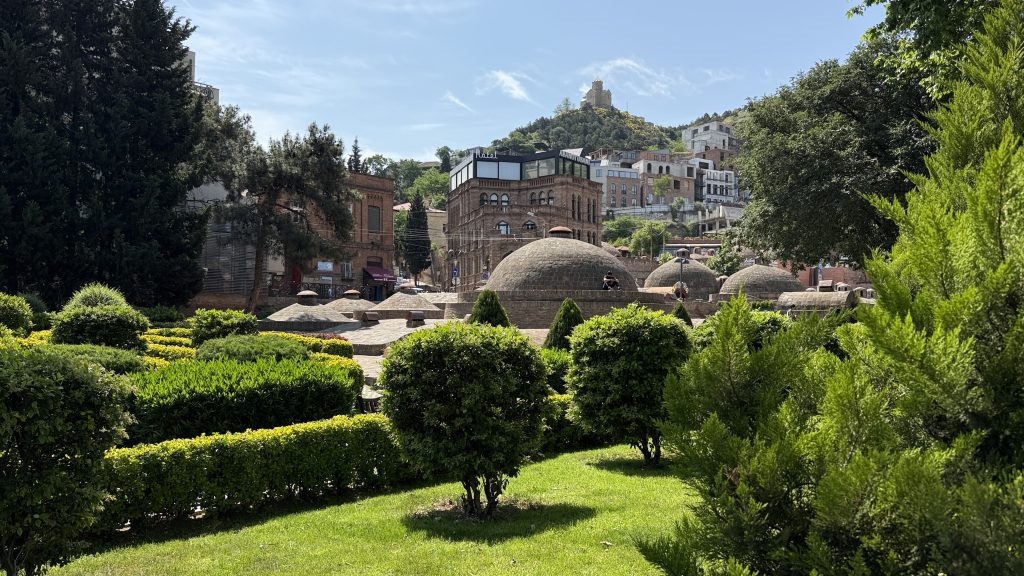

Orbeliani Baths, also called Chreli-Abano—which means “colorful bath” in Georgian, a perfect name—immediately caught my eye. Unlike the plain brick domes of the other bathhouses, this one stood out with its bright blue and turquoise mosaic tiles, arched windows, and stained glass. It looked more like something from Turkey or Iran than Georgia—definitely different from the rest. The building itself dates to the 19th century but has been restored in recent years.
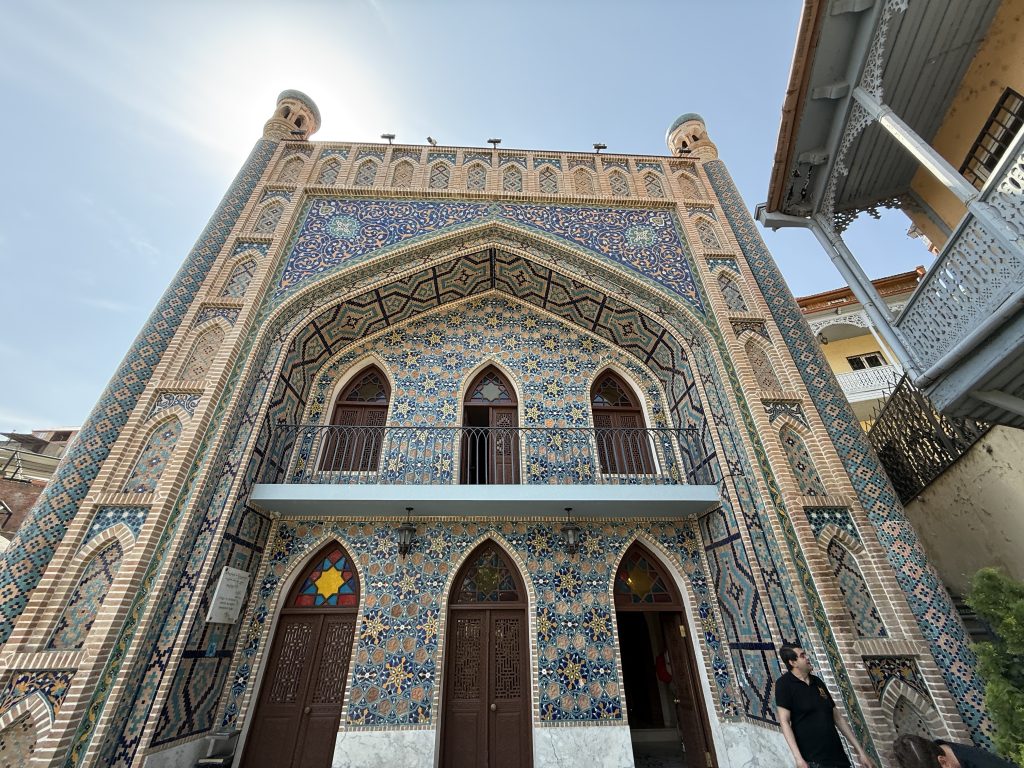
Since I was already in the area and knew I wanted to try a sulfur bath, I decided to stop in and see if they had any appointments. They did.
They offered a few different options. You could book just a private bath, or add treatments like a scrub massage, soap massage, or hair washing. Some of the larger rooms also came with a sauna, cold plunge pool, or a bigger soaking tub. I kept it simple and booked a bath with a scrub. It felt like the most traditional experience.
If you’re after something more luxurious, places like Orbeliani also offer VIP rooms—with private hot and cold sulfur pools, Finnish and Turkish saunas, a massage area, and even a personal bar.
I booked for the next afternoon. The receptionist told me I’d pay the attendant directly for the scrub (in cash) and that I could buy the exfoliating mitt when I arrived for my appointment.
The next afternoon, I walked back to Orbeliani. Outside, a few people were sitting at small metal bistro tables on the patio—probably a spot to relax before or after their baths, maybe have a drink or a small bite.
After checking in and purchasing a mitt, I was led downstairs to the waiting area—a long tiled hallway with chairs, small tables, and a mosaic mural of a woman surrounded by doves—it was beautiful. Like most of the baths in Abanotubani, the rooms are located below street level, built directly over the natural sulfur springs. The water used in the baths comes straight from the source—naturally heated underground and rich in sulfur.

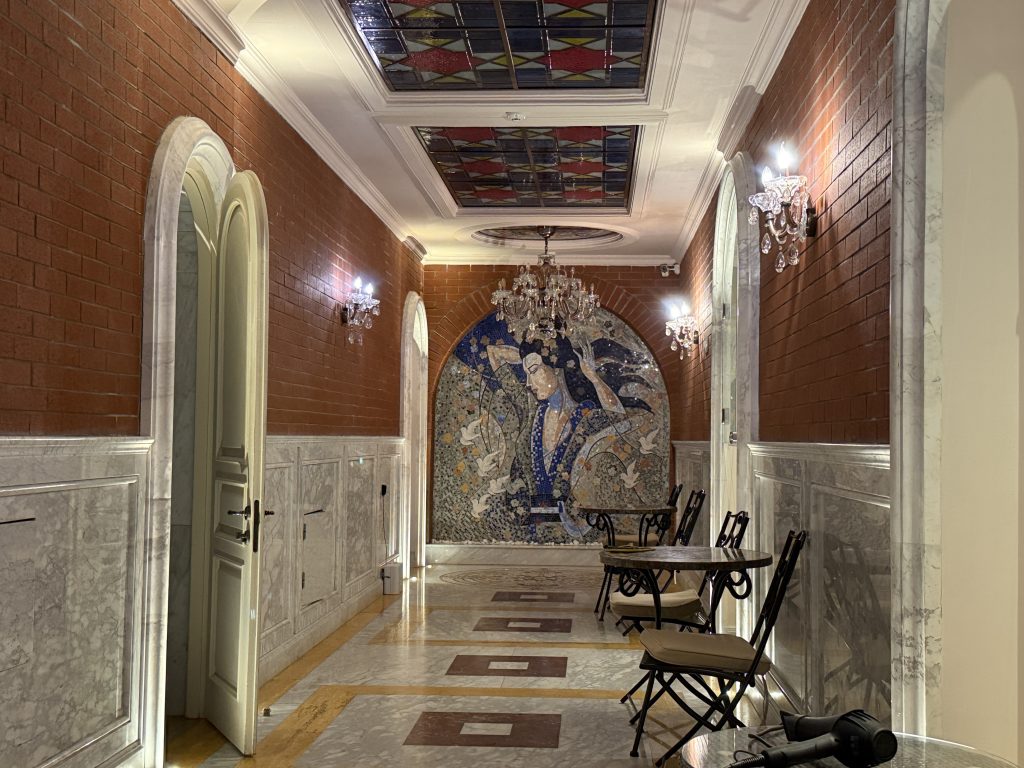
When my room was ready, an attendant led me in and explained everything: where to hang my clothes, where the shower was, and how it would all work. She asked how long I wanted to soak before the scrub and whether I wanted anything brought to the room. I ordered a bottle of water and a glass of wine, which were delivered shortly after.
The room itself was simple but clean: neutral-toned tiles, arched ceilings, a large stone soaking tub already filled with hot sulfur water, a stone platform for the scrub (which also doubled as a resting area), a toilet, hooks for towels, and a walk-in shower. I noticed the sulfur smell as soon as I walked in, but it wasn’t strong—just a light mineral scent that faded pretty quickly.
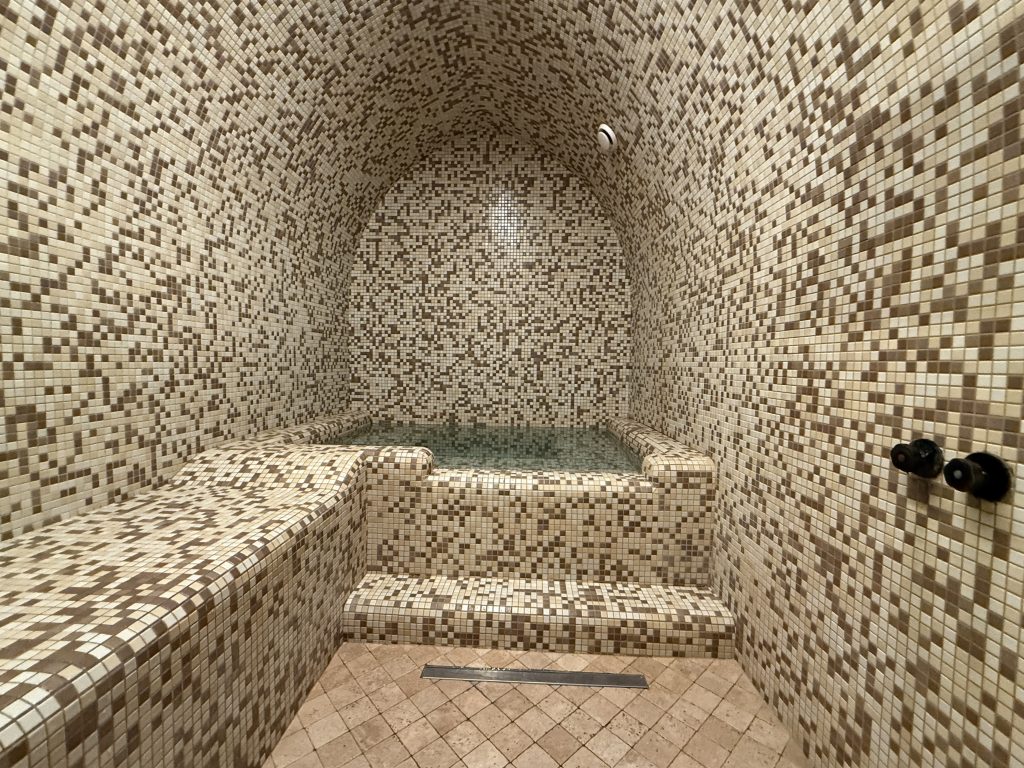
The water was hotter than I expected—probably around 100–104°F (38–40°C)—but once I adjusted, it felt relaxing. I soaked for about 15 minutes before the scrub started.
Another attendant came in for the scrub. She didn’t say much—just gestured for me to lie down on the stone platform.
Lying there, totally bare, about to be scrubbed by a stranger, I couldn’t help but think back to my first hammam in Morocco a few years ago (If you’re curious about my hammam experience in Morocco, you can read about it here). I’ve had plenty of massages over the years, and while I always get completely undressed beforehand, there’s always a towel or sheet draped over me. Even when you turn over, the massage therapist holds the sheet in a way that you’re never actually exposed.
The hammam was different. I was told to undress and lie down on a heated stone slab—just lying there, bare, waiting to be scrubbed or rubbed by someone I’d never met. It’s not that I’m especially modest—it was just a new experience. And this scrub felt somewhat similar, at least when it came to modesty. But after that first hammam? I got over it. Now it’s no big deal.
She lathered me up with thick, foamy soap made from natural oils, using the mitt to scrub me down—starting with my chest and arms, then my legs, then flipping me over.

Funny how lying there, completely bare while a stranger scrubbed me, just felt normal by now. She scrubbed me firmly and methodically, working section by section. When she finished, she rinsed me off with several buckets of warm water, scooped straight from the sulfur bath. Without a word, she nodded and walked away. The whole scrub took about 20 minutes, and as instructed, I paid her in cash afterward.
I was told to rinse off in the shower, which also used the same sulfur-rich water, and then return to the pool for a final soak.
Afterward, I dried off, got dressed, and sat in the waiting area for a few minutes to cool down and sip my water before leaving. My skin felt smooth, soft, and honestly, glowing. I felt clean and recharged.

Whether that was the sulfur water or just the combination of soaking and scrubbing, I’m not sure—but I left feeling relaxed and genuinely glad I’d done it. It didn’t feel like a tourist activity—locals were using the same bathhouse while I was there. But for someone new to sulfur baths, Orbeliani felt like a good introduction. Comfortable, easy to navigate, and not too intimidating. I’d happily do it again.
Next time, I’ll probably book a longer soak—and maybe try one of the simpler bathhouses, just to compare.
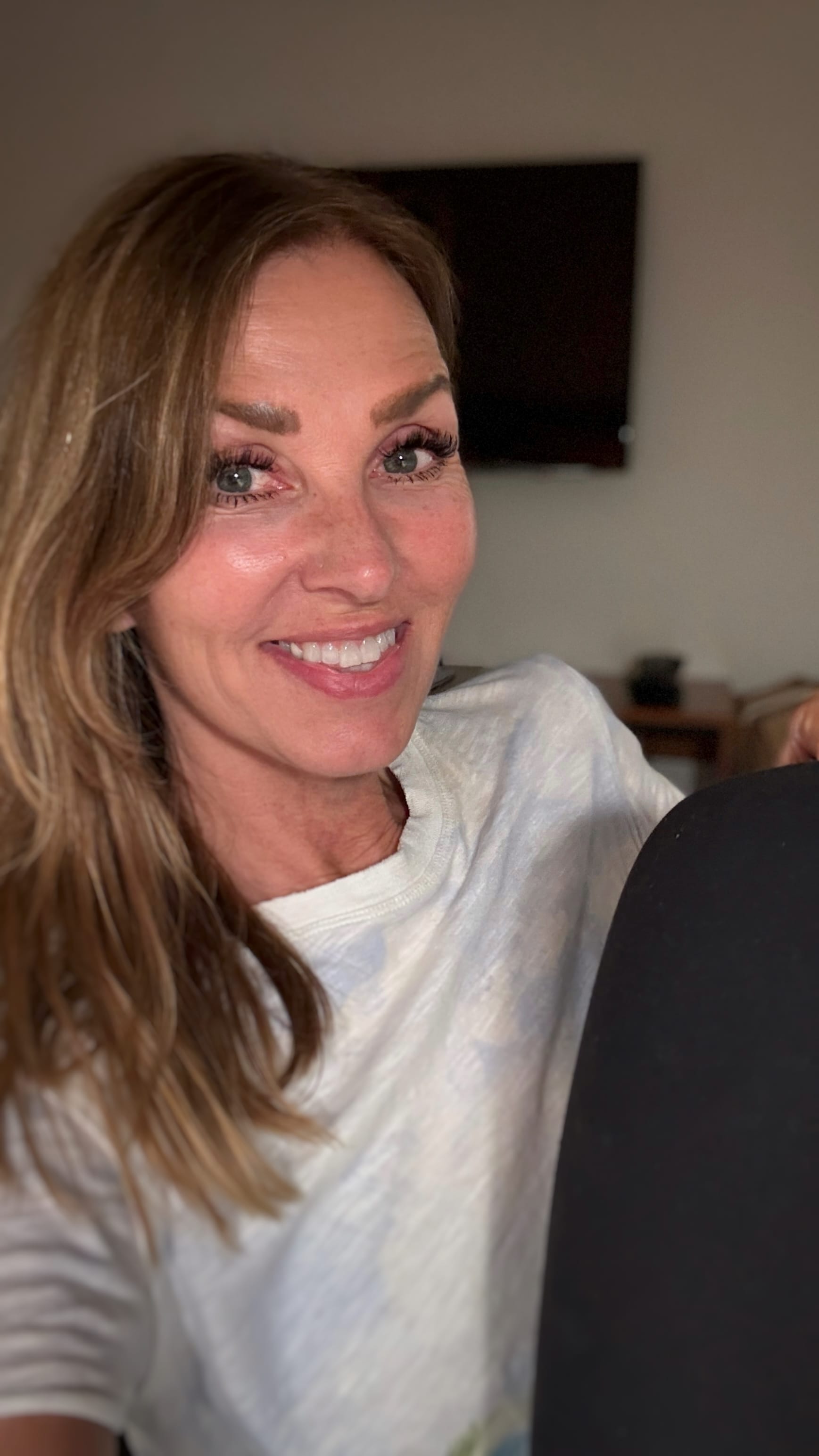
Hi, I’m JoAnne—writer, wanderer, and lover of places that surprise me. I’ve traveled to 60+ countries (and counting), usually with a camera in one hand and a notebook in the other. I’m drawn to mosaics, markets, and mountains, and I write to remember what moved me. When I’m not traveling, I’m working on my blog Travels Afoot, trying new creative projects, or planning my next adventure.